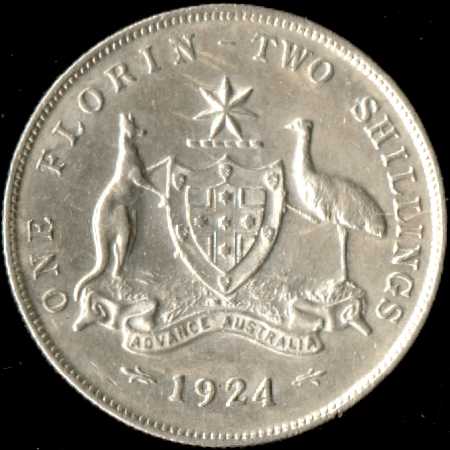
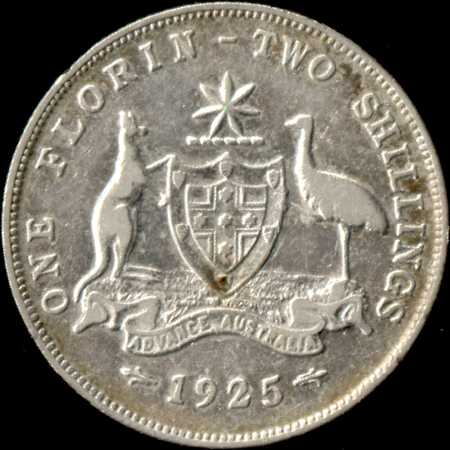
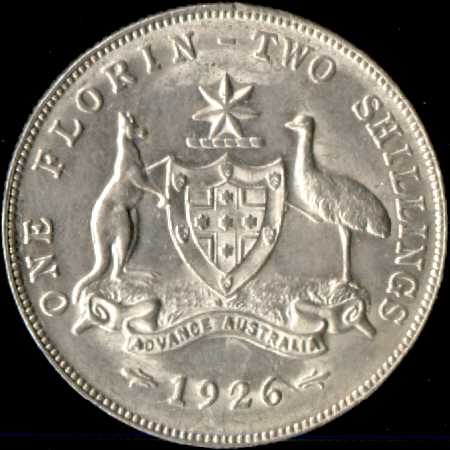
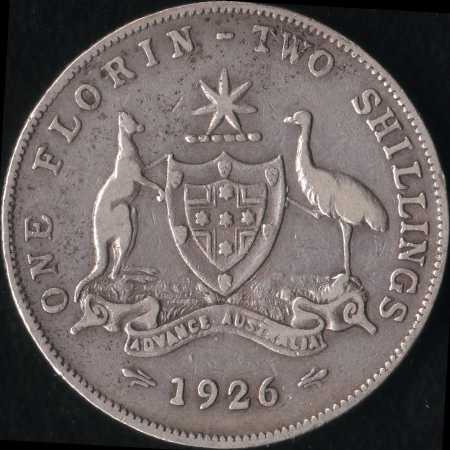
|
|
|
|
|
| |
|
Designation |
|
|
|
|
Mint |
Sydney |
Sydney |
Sydney |
|
Mint mark |
|
|
|
|
Mintage |
953,000 630,000 1,583,000 |
2,316,000 644,000 2,960,000 |
2,072,250 415,000 2,487,250 |
1924, 1925 and 1926 were the only years in which florins were struck at the Sydney
mint. Dies were supplied from Melbourne and there is no way to distinguish the coins
from each mint.
John Dean documents some minor varieties of the '25 and '26 florins, the principal
one being a filled or partially-filled obverse die causing the lower horizontal
stroke in the F of F.D. to be faint or missing. The other two varieties listed for
the 1925 florin only are a dot behind the emu's neck and a hairline die crack through
the date. For the 1924 florin, JD lists a variety where the tail of the 4 is missing,
again because of a filled die. I have a specimen of the 1925 with the filled F but
I don't think any of these varieties is of any importance so I have not bothered
to classify them. [Addendum 14/4/2002: I no longer believe that
the missing letter/number segments in these varieties is the result of die fill.]
Much more important are the high-grade forgeries of the 1926 florin which Dean
describes.
 |
F24MS.2A |
 |
F25MS.2A |
 |
F26MS.2A |
 |
A counterfeit struck at the "Manders Mint" in Sydney. This is an example
of the high-grade forgeries mentioned by John Dean. |
As mentioned above, John Dean lists some missing letter
and numeral segments as varieties, suggesting that they are the result of die fills.
Here are some examples:
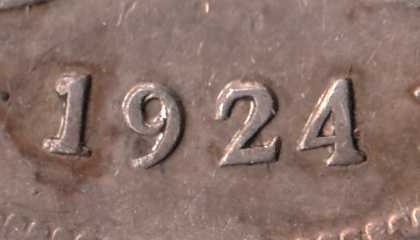 |
Date area of a 1924 florin showing missing tail to the crossbar of the 4. |
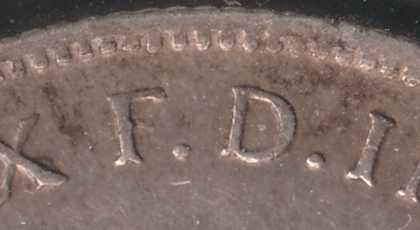 |
Part of obverse lengend of a 1925 florin showing the missing cross-stroke of the
F. Note the strong fishtailing of the legend. |
Now here is a complete picture of that 1924 florin with the missing bit of the
4, along with another enlargement of part of the legend:
|
The broken lettering (E inONE, Fand L in FLORIN) is very reminiscent of similar
faults on the 1928 and 1929 pennies
which were probably the result of a damaged working punch. Support for this conjecture
is lent by the observation that the faults occur in conjunction with heavily fishtailed
lettering, clearly visible here on the E and the R. Now this raises the possibility that the missing tail to the 4 and the missing
crossbar to the F are the manifestations of the same type of die distortion rather
than simple filling as suggested by Dean. |